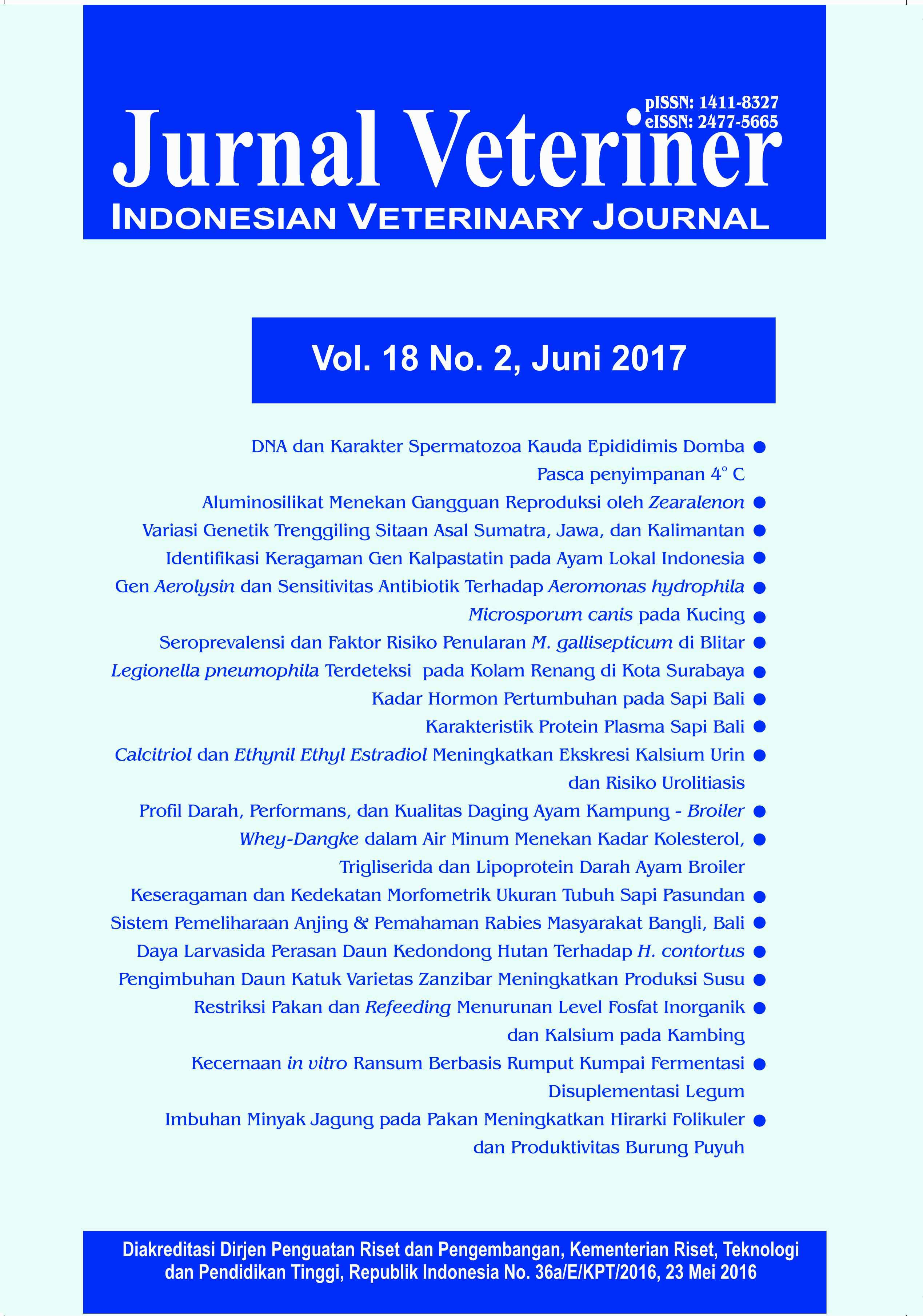Infeksi Microsporum canis pada Kucing Penderita Dermatitis (MICROSPORUM CANIS INFECTION IN DERMATITIS CATS)
Abstract
Dermatitis in cats can be caused by Microsporum canis and is zoonotic. This study aims to perform clinical examination, laboratory examination, isolation, and identification of mold M. canis in cats with dermatitis. Skin scrapped from 30 cats that clinically showed lesions of dermatitis i.e. combination of alopecia, erythema, papules, pustules, scaly, and crusty were used in this study. Examination of clinical lesions and screening tests using the Wood’s lamps were performed prior to sampling. Skin scrapes samples were cultured onto Sabouraud’s dextrose agar medium, incubated at 28 ° C and colonies were identified macroscopically then stained using Lactophenol Cotton Blue for microscopic examination. Seventen of the 30 samples (56.7%) were identified as M. canis macroscopically and microscopically. The skin lesions observed in the 17 M. canis infected cats were erythema, alopecia, scaly, and crusty distributed to the ear, body, neck, back and tail of cats, respectively
ABSTRAK
Dermatitis pada kucing dapat disebabkan oleh Microsporum canis dan bersifat zoonotik. Penelitian ini bertujuan melakukan pemeriksaan klinis, pemeriksaan laboratoris, isolasi, dan identifikasi kapang M. canis pada kucing penderita dermatitis. Kerokan kulit dari 30 ekor kucing yang secara klinis menunjukkan lesi dermatitis berupa kombinasi dari alopesia, eritema, papula, pustula, bersisik, dan berkerak digunakan dalam penelitian ini. Pemeriksaan lesi klinis dan uji screening dengan lampu Wood’s dilakukan sebelum pengambilan sampel. Sampel kerokan kulit dikultur pada media Sabouraud’s dextrose agar, diinkubasi pada suhu 28°C dan diidentifikasi secara makroskopis. Koloni yang tumbuh diperiksa secara mikroskopis menggunakan pewarnaan Lactophenol Cotton Blue. Hasil penelitian menunjukkan 17 dari 30 sampel (56,7%) teridentifikasi M. canis secara makroskopis dan mikroskopis. Lesi kulit yang ditemukan pada 17 kucing positif terinfeksi M. canis menunjukkan adanya eritema, alopesia, bersisik, dan berkerak dengan lokasi penyebaran pada telinga, badan, leher, punggung atau ekor.



















